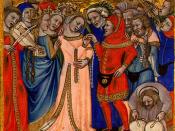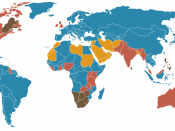Common Law relationships are steadily increasing due to several precipitating events.
Studies, ranging from the 1930's to 1990's, have proven that couples all over the world are choosing to live common law rather than committing themselves through the legal act of marriage. In the last hundred decades marriage was traditionally based upon the women staying home, raising children, while the man went out and earned a living to support the family. This attitude has changed since the 1960's when common law became more prevalent. This form of living is widely used in all generations today; due to women entering the workforce, the sociological changes in the world, and the fact that common law is a much more practical, simple and acceptable way of life.
In the 1970's, common law relationships were formed with the intent to marry.
Statistics show that 75% of couples who engaged in a common law relationship during the 1970's eventually married or separated.
(Thompson,2000:98) This reveals that common law was never really seen as an endeavors union to pursue; it was either leading up to marriage or winding down to separation.
When birth control became available, women's pregnancy rates dropped. Their families were not as big; enabling women to enter the work force. This strongly affected husbands and families. Couples no longer stayed together to raise a family, but more or less for sex. Births without marriage bonds became more acceptable. Divorce was occurring because of sexual frustration, constant disagreements about family finances, and the fact that couples were using birth control and consequently no longer having children. (Thompson,2000:102) ). "The majority of Canadians are still expected to marry at least once before their 50th birthday."ÃÂ1 This quotation defines marriage as an experience, one that may not last a lifetime. The marriage rate in 1973 was...


